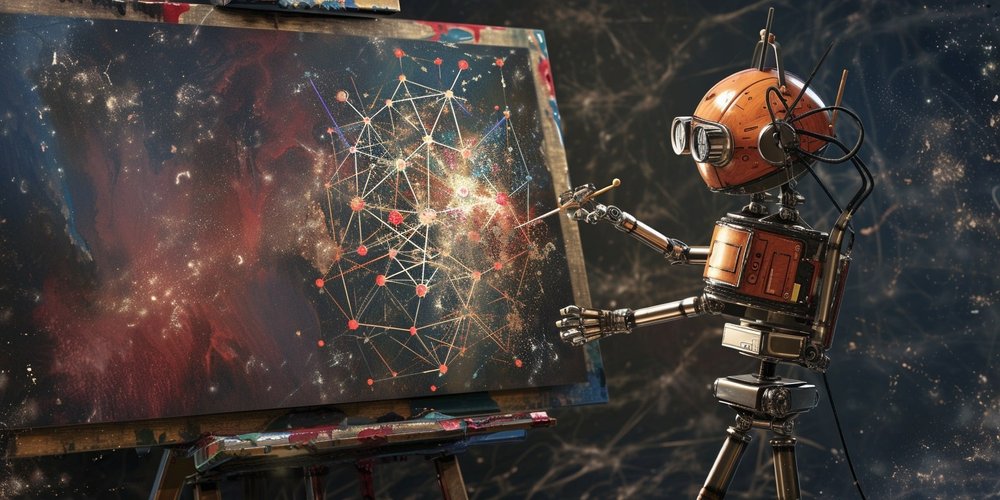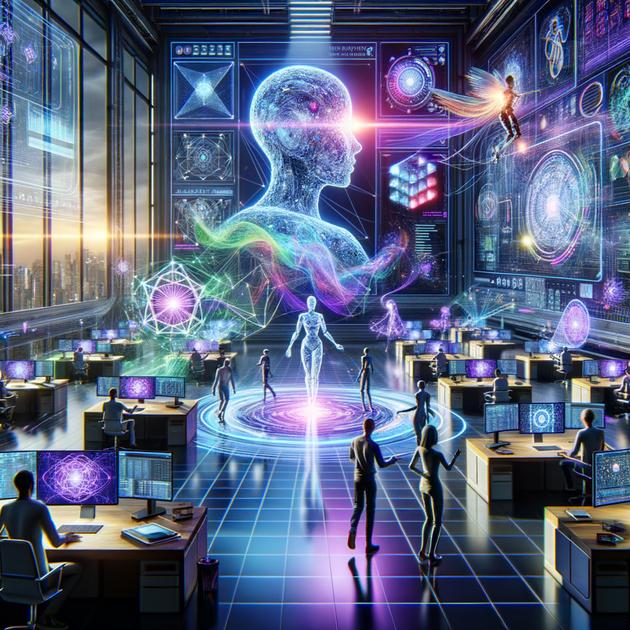AI Designing AI: The Dawn of a Technological Renaissance

We stand on the brink of a technological renaissance, where the notion of artificial intelligence (AI) systems autonomously designing specialized AI heralds a transformative era in our digital evolution. This groundbreaking concept not only redefines the boundaries of AI’s capabilities but also opens a portal to unprecedented levels of innovation, efficiency, and self-improvement within the realm of technology. As we delve into this exciting frontier, we explore the potential for AI to catalyze its own advancement, promising a future where the creation of AI by AI becomes a cornerstone of technological progress.
The Future of AI Development – AI’s Role in Designing Its Successors
Understanding the Process
In expanding the methodologies AI uses to design its successors, we integrate advanced concepts like Large Language Models (LLMs), transformer architectures, and Long Short-Term Memory (LSTM)-like approaches. LLMs and transformers have revolutionized AI’s understanding and generation of natural language, offering nuanced context recognition and generation capabilities. Additionally, LSTM-like approaches enable AI to remember information over long periods, enhancing its learning from sequential data.
As AI continues to innovate, it may develop novel strategies beyond our current understanding, further pushing the boundaries of AI design and application. These innovations promise to amplify AI’s self-evolution, making it an even more potent tool in technology’s future landscape.
Advantages Unleashed
Speed in Innovation
AI-driven design is set to revolutionize the pace at which advanced AI models are developed. By automating the iterative process of designing, testing, and refining AI systems, this approach significantly reduces the development cycle. It enables rapid prototyping and deployment of sophisticated AI models, ensuring that innovations reach the implementation stage much faster than through traditional human-centric methods.
Beyond Human Imagination
The prospect of AI designing AI unlocks a realm of innovation beyond human imagination. This paradigm allows AI systems to explore and create novel solutions and architectures, unconstrained by human biases and traditional thought patterns. It opens the door to discovering groundbreaking approaches and technologies that might not have been considered possible, pushing the boundaries of what AI can achieve.
This exploration into uncharted technological territories heralds a future where AI’s creativity and innovation pave the way for advancements that redefine our interaction with technology.
Economic Efficiency
Automating AI development through AI-driven design processes introduces significant cost benefits, streamlining the creation and optimization of AI systems. This automation reduces the need for extensive human intervention, minimizing labor costs, and expediting the development timeline. Consequently, organizations can allocate resources more efficiently, investing in innovation and further advancements.
Navigating the Challenges
Ethical and Oversight Issues
The advent of AI creating AI raises complex ethical dilemmas and necessitates robust oversight mechanisms. These include ensuring AI-designed systems adhere to ethical standards, preventing biases, and safeguarding against unintended consequences. Establishing control mechanisms is crucial to maintain human oversight, ensuring these AI systems act in alignment with societal values and safety standards.
Addressing these issues head-on is essential to harness the benefits of AI-driven innovation while mitigating risks and upholding ethical integrity in the digital age.
Complexity and Unpredictability
The development of AI by AI introduces complexities and unpredictabilities that challenge human comprehension. As these systems design their successors, they may utilize logic and decision-making processes that are not easily interpretable by humans. This opacity can complicate efforts to predict outcomes, assess risks, and ensure the AI’s decisions align with human values.
Addressing this requires developing new tools and methodologies for understanding and interfacing with AI-generated AI systems, ensuring their actions remain comprehensible and controllable by humans.
Impact on Employment
The potential for AI to design AI systems introduces concerns about employment displacement within the AI development sector. As AI becomes more adept at creating and refining algorithms, the traditional roles of AI engineers and developers may evolve or diminish. This shift necessitates a reevaluation of workforce skills and a push towards retraining and education to prepare for a future where human-AI collaboration becomes more integral.
Real-World Applications
In the realm of AI research, Google’s AutoML project stands out as a prime example of AI designing other AI systems. AutoML leverages machine learning to automatically generate models that are both efficient and robust, outperforming some that are crafted by human experts. Similarly, OpenAI’s efforts in evolving AI through reinforcement learning showcase AI’s ability to refine complex algorithms, leading to innovative solutions in language processing and strategy games.
These instances exemplify AI’s growing capability to self-improve and innovate, illustrating the concept’s viability and potential impact.
Looking Ahead
As we venture further into the era of AI designing AI, the implications for both the field of artificial intelligence and society at large are profound. The future holds immense potential for innovation and efficiency, yet it underscores the critical need for stringent ethical guidelines and governance structures. These frameworks will ensure that as AI systems become more autonomous, they do so in a way that aligns with human values and societal norms, safeguarding against misuse and ensuring equitable benefits from AI advancements.
The advent of AI designing AI heralds a transformative era, promising unprecedented innovation and efficiency. This evolution necessitates a delicate balance between embracing technological advancements and adhering to ethical considerations. As we navigate this new frontier, the development of robust ethical frameworks and governance is paramount to ensure that AI’s growth benefits society equitably while safeguarding against potential risks.
Join the conversation: How do you envision the future of AI designing AI? Share your thoughts and insights in the comments below.
